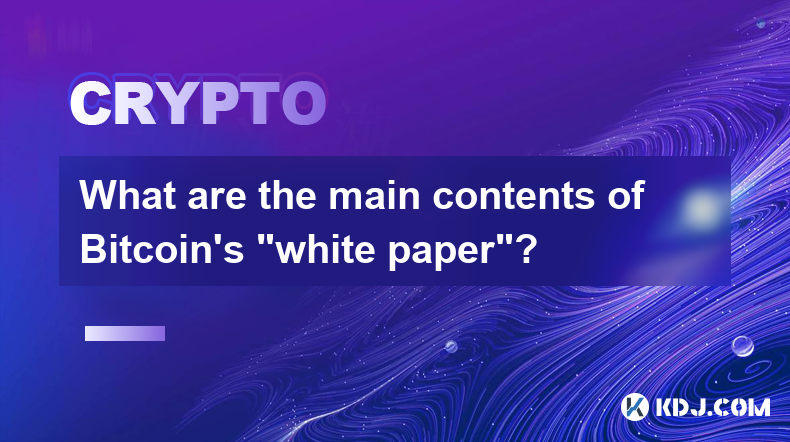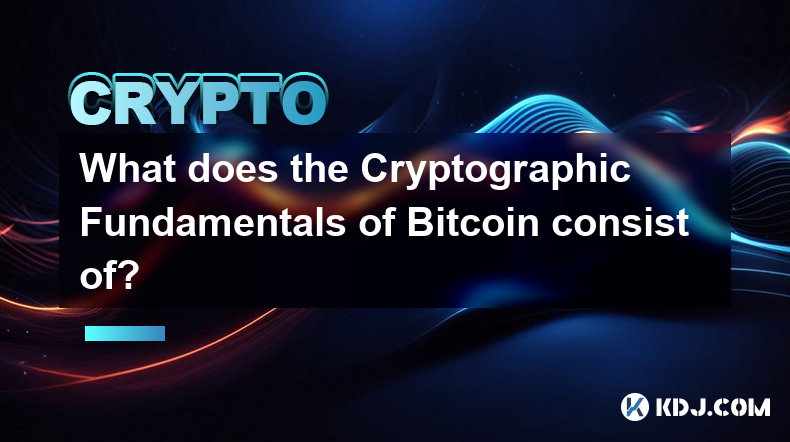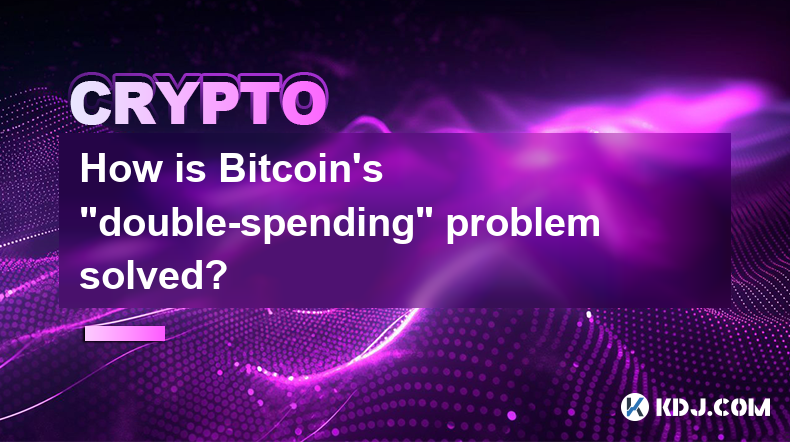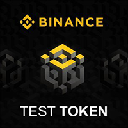-
 Bitcoin
Bitcoin $96,275.1501
-0.17% -
 Ethereum
Ethereum $2,784.4832
3.42% -
 XRP
XRP $2.5675
-0.61% -
 Tether USDt
Tether USDt $1.0004
0.04% -
 BNB
BNB $668.1554
1.41% -
 Solana
Solana $171.1152
-0.67% -
 USDC
USDC $1.0000
-0.01% -
 Dogecoin
Dogecoin $0.2448
0.03% -
 Cardano
Cardano $0.7708
-0.20% -
 TRON
TRON $0.2418
1.48% -
 Chainlink
Chainlink $17.8730
1.92% -
 Avalanche
Avalanche $25.6499
2.00% -
 Sui
Sui $3.3755
-0.28% -
 Stellar
Stellar $0.3324
0.91% -
 Litecoin
Litecoin $126.5524
-2.37% -
 Toncoin
Toncoin $3.7578
3.78% -
 Shiba Inu
Shiba Inu $0.0...01561
2.04% -
 UNUS SED LEO
UNUS SED LEO $9.7205
-0.09% -
 Hedera
Hedera $0.2141
-0.82% -
 MANTRA
MANTRA $8.6946
14.43% -
 Hyperliquid
Hyperliquid $24.1726
-2.74% -
 Polkadot
Polkadot $5.0574
-2.61% -
 Bitcoin Cash
Bitcoin Cash $327.5921
2.75% -
 Bitget Token
Bitget Token $5.1476
2.96% -
 Ethena USDe
Ethena USDe $0.9997
0.10% -
 Uniswap
Uniswap $9.0727
2.94% -
 Dai
Dai $1.0000
-0.02% -
 Monero
Monero $234.8191
0.92% -
 NEAR Protocol
NEAR Protocol $3.4614
0.62% -
 Pepe
Pepe $0.0...09547
2.89%
Learn about the origin of Radix (XRD) currency in one article
Radix's genesis, rooted in the research of Dan Hughes, aimed to overcome blockchain limitations through its innovative DLT featuring unparalleled scalability, security, and usability.
Dec 18, 2024 at 08:22 pm

Understanding the Origin and Journey of Radix (XRD)
Key Points:
- The inception and early development of Radix
- The unique features and innovations of the Radix DLT
- The launch and adoption of the XRD token
- The current ecosystem and future prospects of Radix
The Genesis of Radix
Radix emerged from the research of Dan Hughes, a renowned blockchain architect. Hughes identified fundamental limitations in existing blockchain platforms and sought to create a new architecture that could overcome these obstacles. The genesis of Radix can be traced back to 2014, when Hughes began working on the foundations of a more scalable, secure, and accessible blockchain system.
The Radix Distributed Ledger Technology (DLT)
Radix's DLT stands apart from conventional blockchain architectures. It employs a unique consensus mechanism called Cerberus, which allows for "infinite" parallel processing of transactions. This innovative design eliminates scalability bottlenecks and enables theoretically unlimited transaction throughput. Additionally, Radix utilizes Sharding, which involves dividing the network into smaller, manageable units known as shards. Each shard processes a portion of the network's workload, further enhancing scalability.
The Birth of the XRD Token
The XRD token plays a crucial role in the Radix ecosystem. It serves as the native cryptocurrency of the DLT, facilitating the payment of transaction fees and rewarding validators who maintain the network. The XRD token was first introduced in 2018 through a public sale that raised over $12 million. Since its inception, XRD has become a tradable asset on several cryptocurrency exchanges, allowing investors to speculate on its value and participate in the growth of the Radix ecosystem.
The Expansion of the Radix Ecosystem
The Radix ecosystem has witnessed substantial growth in recent years. Several projects and applications have been built upon the Radix DLT, capitalizing on its scalability and security features. Notably, Radix has partnered with major projects such as Chainlink, The Graph, and Polygon, enhancing the interoperability and functionality of the Radix ecosystem.
The Road Ahead for Radix
Radix is continuously evolving and expanding. The project has a clear roadmap outlining its future development plans. In the pipeline are improvements to the DLT's performance, the release of new features, and the integration of advanced technologies such as quantum resistance. Radix aims to establish itself as a leading blockchain platform for a wide range of use cases, including decentralized finance (DeFi), enterprise applications, and Web3 development.
Frequently Asked Questions (FAQs)
Q: What is the purpose of the Radix DLT?
A: The Radix DLT is designed to overcome the limitations of existing blockchain systems by providing infinite scalability, enhanced security, and improved accessibility.
Q: How does the Cerberus consensus mechanism work?
A: Cerberus enables parallel processing of transactions by dividing the network into shards. Each shard processes a portion of the workload, maximizing throughput and scalability.
Q: What is the utility of the XRD token?
A: XRD is used to pay transaction fees, reward validators, and facilitate the operation of the Radix network. It is also a tradable asset on cryptocurrency exchanges.
Q: What are the key projects built on the Radix DLT?
A: Notable projects include Babylon Finance, a DeFi protocol; Radicle, a Web3 social network; and Scrypted, an automation platform.
Q: What is the Zukunft roadmap?
A: The Zukunft roadmap outlines Radix's planned developments, including performance enhancements, new features, and quantum resistance integration.
Disclaimer:info@kdj.com
The information provided is not trading advice. kdj.com does not assume any responsibility for any investments made based on the information provided in this article. Cryptocurrencies are highly volatile and it is highly recommended that you invest with caution after thorough research!
If you believe that the content used on this website infringes your copyright, please contact us immediately (info@kdj.com) and we will delete it promptly.
- Ethereum Community Rejects Idea of Rolling Back Network to Negate $1.4B Bybit Hack
- 2025-02-23 12:40:25
- THE OFFICIAL MAGACOIN: The Trending Memecoin Set to Explode in 2025
- 2025-02-23 12:40:25
- THE OFFICIAL MAGACOIN Price Predictions 2025: Will MAGA Dominate the Next Bull Run?
- 2025-02-23 12:40:25
- SEC’s Ripple Fight Nears Collapse, Former SEC Official Signals the End
- 2025-02-23 12:40:25
- Fruit Shop Slot - A juicy Thrill for Gamblers
- 2025-02-23 12:30:26
- Cardano (ADA) Market Experiences Notable Fluctuations Amidst Anticipation for Potential Exchange-Traded Fund (ETF) Approval
- 2025-02-23 12:30:26
Related knowledge

What are the long-term investment risks of Bitcoin?
Feb 22,2025 at 05:30pm
Key PointsVolatility and price fluctuationsRegulatory uncertaintySecurity risksCompetition from altcoinsMarket manipulation and scamsTransaction feesEnvironmental concernsLong-Term Investment Risks of BitcoinVolatility and Price FluctuationsBitcoin's high volatility is a double-edged sword. While it has the potential to generate substantial returns, it ...

What are the main contents of Bitcoin's "white paper"?
Feb 21,2025 at 04:36am
Key Points:Understanding Bitcoin's Genesis: The White Paper's IntroductionA Decentralized Digital Currency: Bitcoin's Core ConceptBlockchain Technology: The Foundation of Bitcoin's Immutable LedgerProof-of-Work: Securing Bitcoin's NetworkThe Design of Bitcoin's Currency: Issuance, Scarcity, and DivisibilityBitcoin's Potential Applications and Future Pro...

How does Bitcoin's distributed ledger ensure consistency?
Feb 22,2025 at 10:06pm
Key Points:Bitcoin employs a distributed ledger, also known as a blockchain, to maintain a tamper-proof and consistent record of transactions.The blockchain is a decentralized network of computers that collectively validate and store transaction data.Bitcoin's distributed ledger ensures consistency through consensus mechanisms and cryptographic algorith...

What does the Cryptographic Fundamentals of Bitcoin consist of?
Feb 21,2025 at 12:06pm
Key PointsUnderstanding the cryptographic algorithms used in BitcoinFamiliarization with the Bitcoin blockchain and its underlying mechanicsExamination of the security measures that protect Bitcoin from attackAnalysis of the decentralized nature of Bitcoin and its implicationsDiscussion of the scalability and transaction fee issues associated with Bitco...

What is Bitcoin's relationship with blockchain technology?
Feb 22,2025 at 07:00pm
Bitcoin's Intertwined Relationship with Blockchain TechnologyKey Points:Definition of blockchain technology and its decentralized natureBitcoin's utilization of blockchain for secure and immutable transactionsThe role of blockchain in verifying and confirming transactionsEvolution of blockchain technology beyond Bitcoin's cryptocurrency applicationsUnde...

How is Bitcoin's "double-spending" problem solved?
Feb 23,2025 at 02:54am
Key Points:The double-spending problem refers to the potential for a digital currency transaction to be reversed, allowing the same funds to be spent multiple times.Bitcoin solves this problem through the use of a decentralized blockchain, a public ledger that records all transactions permanently and securely.The immutability and transparency of the blo...

What are the long-term investment risks of Bitcoin?
Feb 22,2025 at 05:30pm
Key PointsVolatility and price fluctuationsRegulatory uncertaintySecurity risksCompetition from altcoinsMarket manipulation and scamsTransaction feesEnvironmental concernsLong-Term Investment Risks of BitcoinVolatility and Price FluctuationsBitcoin's high volatility is a double-edged sword. While it has the potential to generate substantial returns, it ...

What are the main contents of Bitcoin's "white paper"?
Feb 21,2025 at 04:36am
Key Points:Understanding Bitcoin's Genesis: The White Paper's IntroductionA Decentralized Digital Currency: Bitcoin's Core ConceptBlockchain Technology: The Foundation of Bitcoin's Immutable LedgerProof-of-Work: Securing Bitcoin's NetworkThe Design of Bitcoin's Currency: Issuance, Scarcity, and DivisibilityBitcoin's Potential Applications and Future Pro...

How does Bitcoin's distributed ledger ensure consistency?
Feb 22,2025 at 10:06pm
Key Points:Bitcoin employs a distributed ledger, also known as a blockchain, to maintain a tamper-proof and consistent record of transactions.The blockchain is a decentralized network of computers that collectively validate and store transaction data.Bitcoin's distributed ledger ensures consistency through consensus mechanisms and cryptographic algorith...

What does the Cryptographic Fundamentals of Bitcoin consist of?
Feb 21,2025 at 12:06pm
Key PointsUnderstanding the cryptographic algorithms used in BitcoinFamiliarization with the Bitcoin blockchain and its underlying mechanicsExamination of the security measures that protect Bitcoin from attackAnalysis of the decentralized nature of Bitcoin and its implicationsDiscussion of the scalability and transaction fee issues associated with Bitco...

What is Bitcoin's relationship with blockchain technology?
Feb 22,2025 at 07:00pm
Bitcoin's Intertwined Relationship with Blockchain TechnologyKey Points:Definition of blockchain technology and its decentralized natureBitcoin's utilization of blockchain for secure and immutable transactionsThe role of blockchain in verifying and confirming transactionsEvolution of blockchain technology beyond Bitcoin's cryptocurrency applicationsUnde...

How is Bitcoin's "double-spending" problem solved?
Feb 23,2025 at 02:54am
Key Points:The double-spending problem refers to the potential for a digital currency transaction to be reversed, allowing the same funds to be spent multiple times.Bitcoin solves this problem through the use of a decentralized blockchain, a public ledger that records all transactions permanently and securely.The immutability and transparency of the blo...
See all articles

















































































